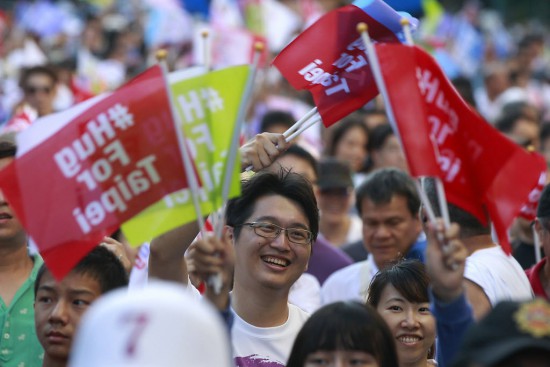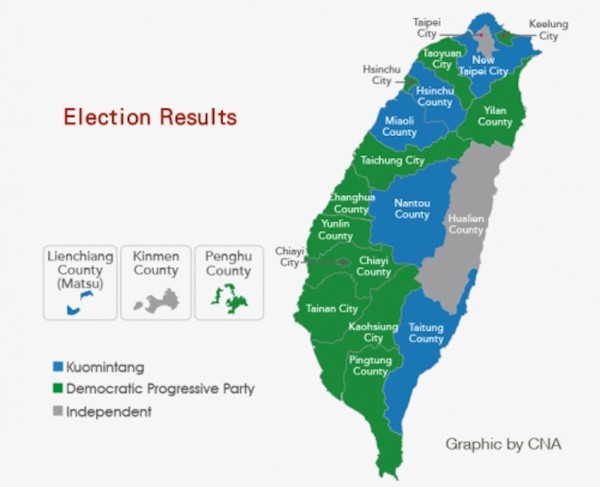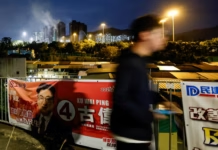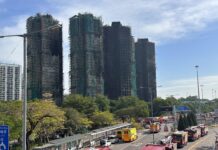Taiwan’s ‘Sunflower Movement’ and democracy protests in Hong Kong fuel massive rejection of ruling party
Vincent Kolo and CWI Taiwan reporters
The term “political earthquake” has been widely used to describe Taiwan’s mayoral and local elections on 29 November. The results were a crushing defeat for the ruling Kuomintang (KMT) or Nationalist Party, leaving it with control of just six of the 22 largest cities compared to 15 previously. The main opposition party, the pro-independence Democratic Progressive Party (DPP), won control of 13 cities with independents winning three.
The implications of this changed political landscape are massive for China’s one-party dictatorship as well as for Taiwan’s capitalist elite, which overwhelmingly backs the policies of KMT president Ma Ying-jeou, resting on the twin pillars of neo-liberalism and closer economic integration with China (the main source of profit for Taiwan’s biggest corporations). These elections signify a sweeping rejection of Ma’s corporate pro-China agenda and undoubtedly reflect a spillover effect from the mass anti-government ‘Sunflower Movement’ that mobilised hundreds of thousands on the streets during the spring. Likewise, the concurrent protests in Hong Kong against China’s imposition of a rigged Iran-style election system have hardened the attitude of Taiwan’s voters against the Chinese regime and the KMT as its political collaborators.
Taiwan’s pro-government China Times noted that “Only the presidential office remains for the KMT after its total defeat.” Premier Jiang Yi-huah resigned immediately as the shock results became clear. He is an especially hated figure after the police repression against protesters this spring, carried out on his orders. Three days later, Ma resigned as KMT Chairman offering a ritualistic “apology”. With a presidential election barely a year away (January 2016) these results could signal the return to power of the DPP, a prospect both Beijing and Washington have tried to prevent for fear of triggering a conflict.
Opinion polls had predicted reverses for the ruling party, but the scale of the defeat was far worse than the pundits expected. The KMT’s share of the vote imploded from 48.1 percent at the time of the combined presidential and parliamentary elections in 2012, to 40.7 percent in these elections for nine levels of municipal government up to and including the key mayoral posts in major cities. In the process, the KMT has lost control of its traditional northern power base, including the capital Taipei and the city of Taichung. The only major conurbation still under KMT control is New Taipei City, where the incumbent mayor and KMT “rising star” Eric Chu Li-luan held onto his post but with 150,000 fewer votes than in the previous election four years ago.
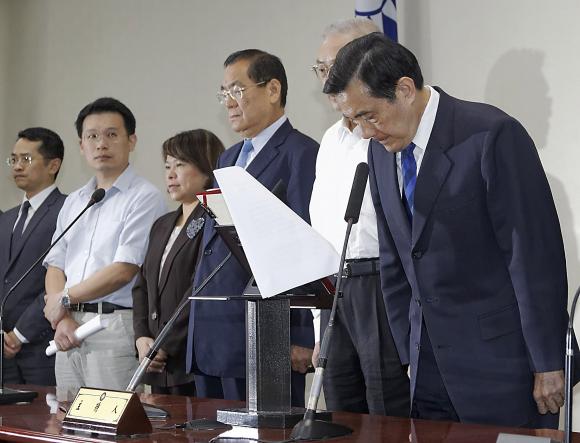
Role of youth
The turnout of 68 percent was especially high among young voters – 78 percent – which is a key factor behind the KMT’s collapse. Youth, radicalised by the mass protests in March against Ma’s attempt to railroad a cross-strait trade agreement through parliament, mobilised around an online campaign with the slogan “No future for Taiwan unless the KMT falls!” While Ma’s opinion ratings have been extremely low for a long time – currently at the slightly improved (!) level of 11 percent – it is the impact of the mass protests that has broadened this into a mood to kick out the KMT at every level. The question is whether the KMT, which has ruled Taiwan for most of the past 65 years (the first four decades as a one-party dictatorship), can ever recover?
For the DPP this was its best election result since the party’s foundation in 1986, allowing it to break out of its traditional southern heartland. This party has for many years moved rightward and embraced neo-liberalism. More recently, under the pressure of the capitalists its leadership is adopting a softer line towards China arguing this is the ‘price’ it must pay to win the next presidential election (echoing the position of US imperialism). But the DDP’s gains were mainly by default as the most readily available tool to use against the KMT.
Recent years and especially the ‘Sunflower Movement’ have seen growing scepticism towards both the KMT-led pan-blue bloc (pro-China political alliance) and the DPP-led pan-greens (pro-independence). The latter have increasingly been sidelined as a force within mass protests in much the same way as Hong Kong’s pan democratic opposition were largely sidelined during the recent ‘Umbrella Movement’. An increasingly critical stance towards the DPP was shown in the landslide victory in Taipei for independent candidate and political newcomer Ko Wen-je. Ko romped home to victory at the expense of the KMT’s ‘princeling’ candidate Lien Sheng-wen, a millionaire investment banker and son of the former party leader Lien Chan. For many, Lien symbolises the rotten ossified system in Taiwan of KMT and tycoon rule.
Ko is one of the few candidates whose campaign aroused genuine enthusiasm. This was due to his ‘outsider’ image – although his candidacy was supported by the DPP – and his campaign slogan to “break the blue and green wall”, which implied an alternative to the current two-party stranglehold, although Ko’s policies cannot deliver on this.
Rising inequality
The six years of Ma’s presidency have seen a widening wealth gap and massive disaffection among youth especially over low wages, dead-end jobs and the extortionate cost of housing. The unemployment rate for 20-24 year-olds is 14 percent as key sectors of the island’s manufacturing economy have been hollowed out, with production shifted to China and other cheap labour countries. A spate of food safety scandals also loomed large in the election campaign, the latest involving so-called “gutter oil” – recycled industrial oil that was sold to restaurants and food manufacturers as cooking oil.
A speculative property boom has driven house prices beyond the reach of most young people. Average apartment prices are fifteen times average incomes, a higher ratio even than in Hong Kong. The widening gap between the ‘haves’ and ‘have nots’ is identified by the masses with the increasing grip of China and its authoritarian system over Taiwan’s economy and political elite. One blogger described this as a “Taiwan version of the war of the one percent versus the 99 percent with Chinese characteristics.” The KMT is seen as closely allied with the CCP dictatorship, with Ma having signed no fewer than 21 trade and economic agreements with China.
New political alternatives
The influence and following of student and civic groups has grown as a result of the ‘Sunflower’ protests, and their intervention in these elections undoubtedly played a key part in the scale of the KMT’s defeat. At the same time these groups confined themselves to campaigning against the KMT, without putting an independent alternative. We have not seen a development like in Spain, where the radical anti-establishment party Podemos emerged from the 2011 ‘Indignados’ movement as an open break with the old political elite, and with 28.3 percent is now the largest party in opinion polls. Taiwan’s radical student groups have so far not been prepared to openly challenge the DPP and pan-green bloc although, like Hong Kong’s pan democratic parties, the DPP clearly stands for pro-capitalist policies and eschews mass struggle. Only this bloc’s formal commitment to independence distinguishes it from the pan-blues. One exception was in Kaohsiung City where a student group, the Wing of Radical Politics, fielded four candidates on a left-leaning pro-independence platform and won an encouraging 27,277 votes.
This arrangement of forces allowed the DPP and pan greens, undeservedly, to harvest the results of the popular anti-KMT mood. As a sign of things to come, however, DDP Secretary-General Joseph Wu Chao-hsieh flew to Washington the day after the elections “with a message that the election should not be seen as a defeat for the cross-strait policies of the Ma administration.” [Taipei Times, 7 December] The DPP’s own election analysis has strenuously played down any link between the KMT’s historic defeat and its China policy, hiding behind the ‘local’ character of these elections.
DPP leader Tsai Ing-wen, who will most likely again be the party’s presidential candidate in 2016, has made clear she wants to shift away from the party’s traditional pro-independence position. Arguing that Taiwan is “already independent” after more than 60 years of self-rule, the leading group around Tsai want to reach an accommodation with Beijing to insure Ma’s cross-strait policies can continue (with some modification) as demanded by the corporate elite on both sides of the Taiwan Strait. This will set the DPP leadership on a collision course with growing pro-independence sentiment which has surged since the ‘Sunflower Movement’ – support for independence hit 30.1 percent in a September poll up from 25 percent in March (compared to 10 percent in 1994). The September poll showed 47 percent favouring “no change” which is mainly predicated on the fear of war with China should a formal declaration of independence be made. Just 8.9 percent supported reunification with China.
The Chinese regime has also, especially since the ‘Sunflower Movement’, realised the inevitability of a political shift and increasing likelihood of a DPP government. It has begun unofficial meetings with DPP representatives, something it previously held as taboo. While the US government wants to contain China through its military and economic ‘pivot’ to Asia, it does not want an immediate and unpredictable conflict to erupt over Taiwan (the US is pledged to defend Taiwan militarily), especially when its global focus has been pulled back towards the Middle East and the results of its own destructive handiwork in Iraq and Syria.
The election of Mayor Ko in Taipei gives a glimpse of the potential for a ‘third force’ to challenge the blue and green blocs, but Ko’s populist campaign rhetoric may very quickly give way to disillusionment. His promise to “democratise” the city’s government struck a popular chord, but concretely this consists of very limited reforms. One is the election of the head of the city’s Labour Bureau (from among pre-screened candidates). Ko will also hold a public vote on some budget spending, but only six percent of the total, and again choosing only from proposals made by selected “experts”. Rather than “breaking” the domination of the two capitalist blocs, Ko’s aim is to balance between them using a mix of blue and green capitalist policies. This is shown by his decision soon after his victory to appoint former pan-blue stalwart James Soong Chu-yu to be his ‘top advisor’. Soong is an ardent Chinese nationalist who led a right-wing breakaway from the KMT.
The only real alternative to the domination of the pro-business pan-blue and pan-green political machines is a socialist alternative that rejects capitalism with its crises and growing extremes of rich and poor, and orientates to mass struggle especially by the working class. The young workers, students and other layers involved in the mass struggles of the past year can provide the impetus for such a new left political force, but only by decisively breaking with the pan-green forces (especially for the students) and moving to openly challenge both capitalist political blocs. A new party of the working class would fight the pro-China agenda of the capitalists but with class rather than nationalist arguments, seeking to build united resistance against capitalism and authoritarian rule with mainland workers, while also clearly defending the democratic right of the Taiwanese people to self-determination and an independent socialist Taiwan as part of an Asia-wide struggle to eliminate capitalism.
Repercussions for China
The transformation of Taiwan’s political map, which these elections signify, has grave implications for the Chinese dictatorship. This completes a year in which the regime has faced a succession of major challenges on its ‘periphery’ – Taiwan’s ‘Sunflower Movement’, the biggest mass movement in Hong Kong’s history (‘Umbrella Revolution’) and now the electoral decimation of the KMT. Even formerly ‘tranquil’ Macau has been shaken by the largest anti-government protests since its return to Chinese rule in 1999. The regime’s long-term strategy of “influencing politics through [capitalist] business” is now in crisis, encountering mounting opposition in these societies. Beijing’s allies the local tycoons are increasingly despised by the populace. The struggles of the past 12 months are a foretaste of what is to come, with capitalism incapable of ameliorating the conditions of the masses and especially the youth. These political tremors are also a warning of what can break out in China itself in the next period, where the masses and especially the younger generation hold strikingly similar grievances.

